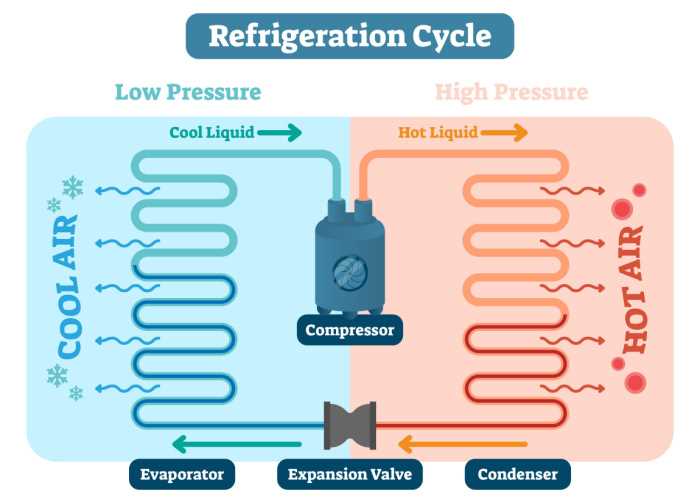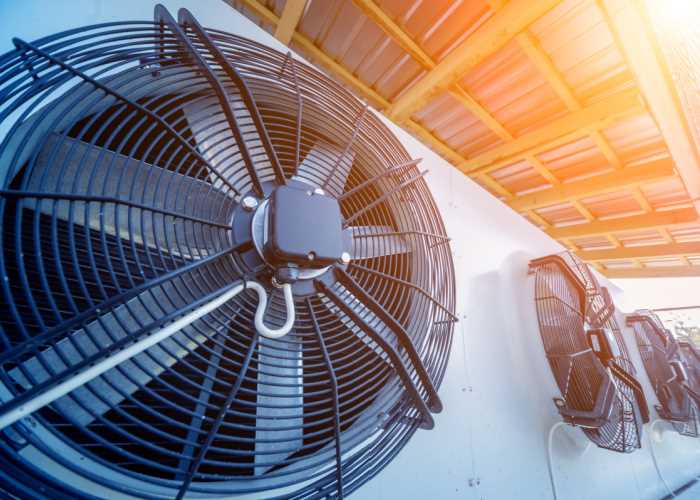Direct expansion cooling, often referred to as DX cooling, is a time-tested method for controlling temperatures in a wide range of settings.
With applications ranging from households to industrial facilities, DX systems have played a key role in the HVAC industry for decades.
But before we take a closer look at the various types of DX systems and their applications, let's go over the basics of what this technology is and how it works.
DX cooling is a common and straightforward approach to removing heat from an indoor space or a refrigerated compartment, and is widely used in domestic, commercial and industrial applications.
Here's a closer look at the main parts and processes of a DX cooling system:

Refrigerant: DX cooling systems use a refrigerant, a special fluid that can easily change from a liquid to a gas and back again at relatively low temperatures. Common refrigerants include R-410A and R-134a, among others.
Evaporator coil: in the indoor unit of the cooling system, there is an evaporator coil. This coil is connected to the indoor air handling unit (AHU) or the space that needs to be cooled. Warm air from the space is blown over the evaporator coil.
Evaporation: as warm air passes over the evaporator coil, the refrigerant inside the coil evaporates, absorbing heat from the air. This phase change from liquid to gas is an endothermic process that cools the surrounding air.
Refrigerant circulation: the now-gaseous refrigerant is then pumped by a compressor into the outdoor unit of the system
Condenser coil: in the outdoor unit, the gaseous refrigerant is compressed, which raises its temperature significantly, and passed through a condenser coil. The outdoor fan helps dissipate the heat from the refrigerant into the external environment.
Condensation: as the refrigerant releases heat to the outdoor air, it condenses back into a liquid state.
Expansion valve: after condensing, the high-pressure liquid refrigerant is passed through an expansion valve, which reduces its pressure and temperature.
Evaporator coil (again): the low-pressure, low-temperature liquid refrigerant is then sent back to the indoor evaporator coil to start the cycle again.
This continuous cycle of evaporation and condensation removes heat from the indoor space, effectively cooling it. The heat absorbed by the refrigerant indoors is released outside, maintaining a comfortable indoor temperature.
There are multiple types of DX cooling and refrigeration systems, each suited to specific applications and cooling requirements.
The choice of system depends on factors such as the size of the space, the desired level of control and energy efficiency considerations, but some common options include:
Split systems consist of two main components: an indoor unit (evaporator coil and blower) and an outdoor unit (compressor and condenser coil).
They are commonly used in domestic and small commercial applications for cooling individual rooms or zones.
Packaged DX units are self-contained systems that contain all the components (evaporator, compressor, condenser and blower) in a single cabinet. They’re typically used for cooling larger commercial spaces or entire buildings.
There are different types of packaged units, including rooftop units (installed on the roof) and ground-mounted units.
Heat pumps are a type of DX system that can provide both heating and cooling. They work by reversing the refrigeration cycle, allowing them to extract heat from the outdoor air (even in cold weather) and transfer it indoors for heating.
Heat pumps are commonly used in domestic and commercial applications.
VRF systems are a more advanced form of DX cooling and heating. They can provide simultaneous heating and cooling to different zones within a building, offering precise temperature control and high energy efficiency, and are often used in commercial and multi-zone residential applications.
In some commercial buildings, chilled water is used as the primary cooling medium, and DX coils are employed to cool the air.
Chilled water systems circulate cold water through a network of pipes to cooling coils in air handlers or fan coil units. DX coils in these units provide additional cooling by using refrigerant to cool the air further.
DX cooling is a versatile technology with a diverse range of applications - from ensuring human comfort to preserving products and critical equipment.
Some of the key areas where DX cooling is commonly employed include:

Household cooling: DX cooling systems are extensively used in homes to maintain comfortable indoor temperatures during hot weather. Split air conditioning systems, ductless mini-splits, and window air conditioners are popular choices for cooling individual rooms or entire residences.
Commercial cooling: in commercial spaces such as offices, retail stores, restaurants and hotels, DX cooling helps to create a comfortable environment for employees, customers and guests. Packaged rooftop units and VRF systems are often used to meet the diverse cooling needs of commercial buildings.
Industrial cooling: large industrial facilities rely on DX cooling systems to control temperatures in manufacturing processes, production areas and equipment rooms. These systems help ensure the efficient operation of machinery and prevent overheating.
Data centres and server rooms: data centres, server rooms and network closets require precise temperature control to safeguard critical computer servers and networking equipment. DX cooling systems are indispensable for maintaining stable and cool conditions in these environments.
Specialised applications: DX cooling also has applications in unique settings like laboratories, medical facilities and cleanrooms, where maintaining specific temperature and humidity conditions is crucial for research, medical procedures and manufacturing processes.
At Loughborough Air Conditioning, we have a wealth of experience with DX cooling and its wide range of uses - from domestic air conditioning to fully bespoke industrial applications.
We offer design, installation and commissioning services, tailored to your unique requirements and delivered by fully qualified engineers.
We also ensure optimum performance and maximum lifetime efficiency through ongoing maintenance and repair.
